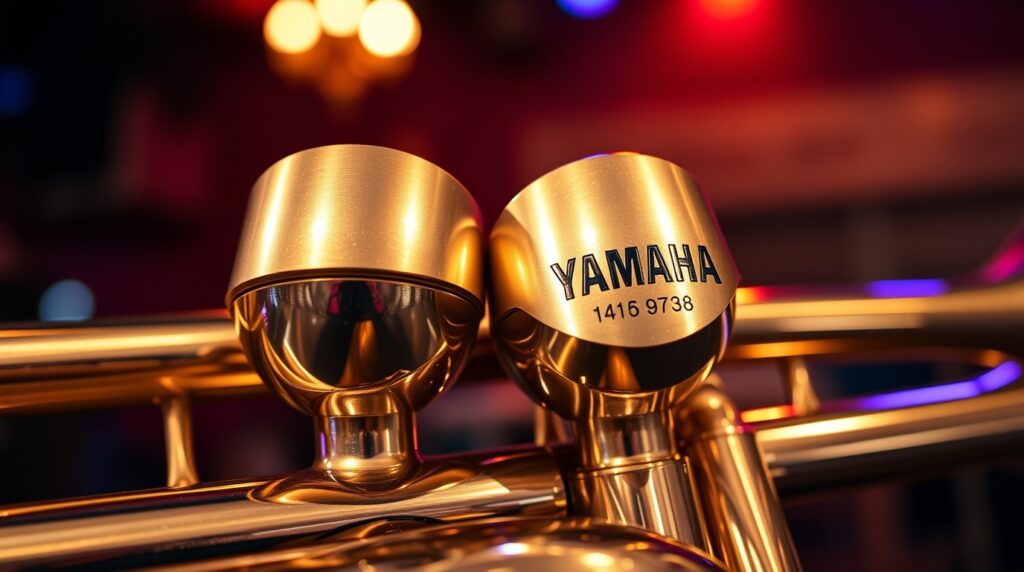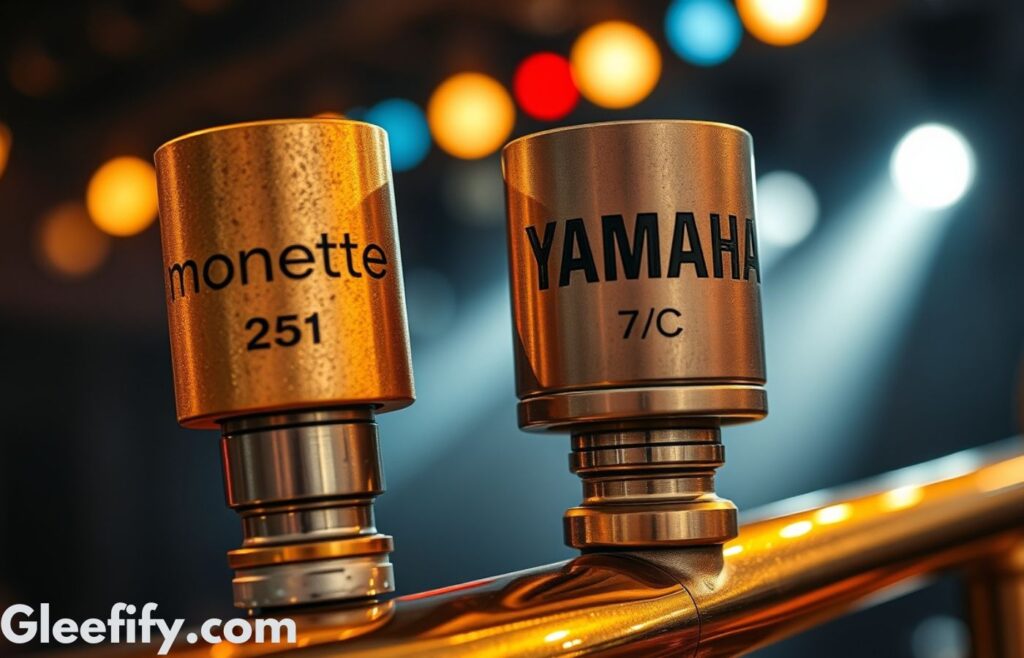The Ultimate Monette vs. Yamaha 7C Trumpet Mouthpiece Comparison
Choosing the Right Trumpet Mouthpiece
Selecting the right trumpet mouthpiece can make a huge difference in tone, endurance, and overall playing ability. Among the most discussed options are Monette mouthpieces and the Yamaha 7C, each catering to different player needs. But which one is right for you?
In this comprehensive guide, we’ll compare Monette vs. Yamaha 7C, break down equivalents for Bach and Yamaha models, and help you decide which mouthpiece best suits your playing style.
Why Your Mouthpiece Choice Matters
A trumpet mouthpiece affects: 



If you’re struggling with high notes, endurance, or a dull tone, choosing the right mouthpiece can solve these problems
What is a Monette Mouthpiece?
Monette mouthpieces are known for their:
- Advanced acoustic design that enhances resonance and projection.
- Better endurance due to their efficient air flow system.
- Premium build quality with high-precision craftsmanship.
- Higher cost (ranging from $200-$400+ per mouthpiece).

Pros & Cons of Monette Mouthpieces
| Pros | Cons |
|---|---|
| Rich, warm sound | Expensive |
| Improved endurance | Takes time to adjust |
| Superior projection | Heavier than standard mouthpieces |
| Designed for efficiency | Not ideal for beginners |
What is the Yamaha 7C Mouthpiece?
The Yamaha 7C is a standard, all-around mouthpiece that offers:
- Balanced tone—ideal for different styles.
- Affordable pricing (typically $30-$50).
- Comfortable rim for easier playability.
- Versatility—used by beginners and professionals alike.

Pros & Cons of Yamaha 7C
| Pros | Cons |
| Affordable | Less projection than Monette |
| Balanced, all-around sound | Limited endurance for extended playing |
| Easy to play | Not as rich in tone as Monette |
| Great for beginners | Less efficient air control |
Monette vs. Yamaha 7C: In-Depth Comparison
| Feature | Monette | Yamaha 7C |
| Price | $$$ (High) | $ (Affordable) |
| Sound Quality | Rich, warm, resonant | Bright, balanced |
| Endurance | Enhanced, less fatigue | Moderate endurance |
| Material | High-quality brass | Standard brass alloy |
| Weight | Heavier, larger | Lighter, standard size |
| Projection | Powerful, full sound | Good, but not as strong |
| Player Level | Advanced & professionals | Beginners & intermediate |

Monette Equivalents to Yamaha & Bach Mouthpieces
If you’re switching from a Bach or Yamaha mouthpiece to Monette, here’s a helpful conversion chart:
| Standard Mouthpiece | Monette Equivalent |
| Yamaha 7C | Monette B2 S3 |
| Bach 3C | Monette B2S3 |
| Bach 5C | Monette B4S |
| Yamaha 14A4A | Monette STC-1 B4S |
| Yamaha 16C4 | Monette PRANA 6 |

Which Mouthpiece Should You Choose?
Choose Monette If:




Choose Yamaha 7C If:




How to Transition from a Standard Mouthpiece to a Monette: A Step-by-Step Guide
Switching from a Yamaha 7C, Bach 3C, or 5C to a Monette mouthpiece requires adjustments due to the unique weight, design, and air efficiency. Follow these steps for a smooth transition:
Step 1: Start with Low-Pressure Exercises
Monette mouthpieces encourage less tension and better airflow. To adapt: 


Step 2: Gradually Increase Playing Time




Step 3: Adjust Your Embouchure Approach
Monette’s design requires a slight embouchure adaptation: 


Step 4: Compare Your Sound
Record yourself playing the same exercises on both mouthpieces: 


 Best Mouthpieces for High Notes, Endurance & Jazz: Monette vs. Yamaha Breakdown
Best Mouthpieces for High Notes, Endurance & Jazz: Monette vs. Yamaha Breakdown
Best for High Notes & Lead Playing


Best for Endurance & Flexibility


Best for Jazz & Warm Tone



FAQ Section
1. What is the best Monette mouthpiece for jazz?
The Monette B6L or STC-1 B4S is great for jazz, offering a bright tone and flexible response.
2. Is a Monette mouthpiece good for high notes?
Yes! Monette mouthpieces, particularly lead models like PRANA B6L, provide excellent support in the upper register.
3. Can I switch from a Yamaha 7C to a Monette easily?
Switching requires an adjustment period since Monette mouthpieces have a unique weight and design that affects embouchure.
Pro Tips for Maximizing Performance
Try different rim sizes to match your playing style.
Use a mouthpiece visualizer app to analyze airflow.
Practice long tones to fully experience Monette’s resonance.
Consider hybrid setups before fully switching.
Final Verdict: Monette vs. Yamaha 7C
Both mouthpieces have strengths and weaknesses:
- Monette: Best for professionals seeking a premium playing experience.
- Yamaha 7C: Best for beginners and those wanting affordability & versatility.


Discover Mind-Blowing Blogs You CAN’T Afford to Miss! 







 Reparación de Computadoras a Domicilio Cerca de Mi Ubicación
Reparación de Computadoras a Domicilio Cerca de Mi Ubicación Chef AAA ACSP1 – The Game-Changer in Commercial Kitchens (2025)
Chef AAA ACSP1 – The Game-Changer in Commercial Kitchens (2025)